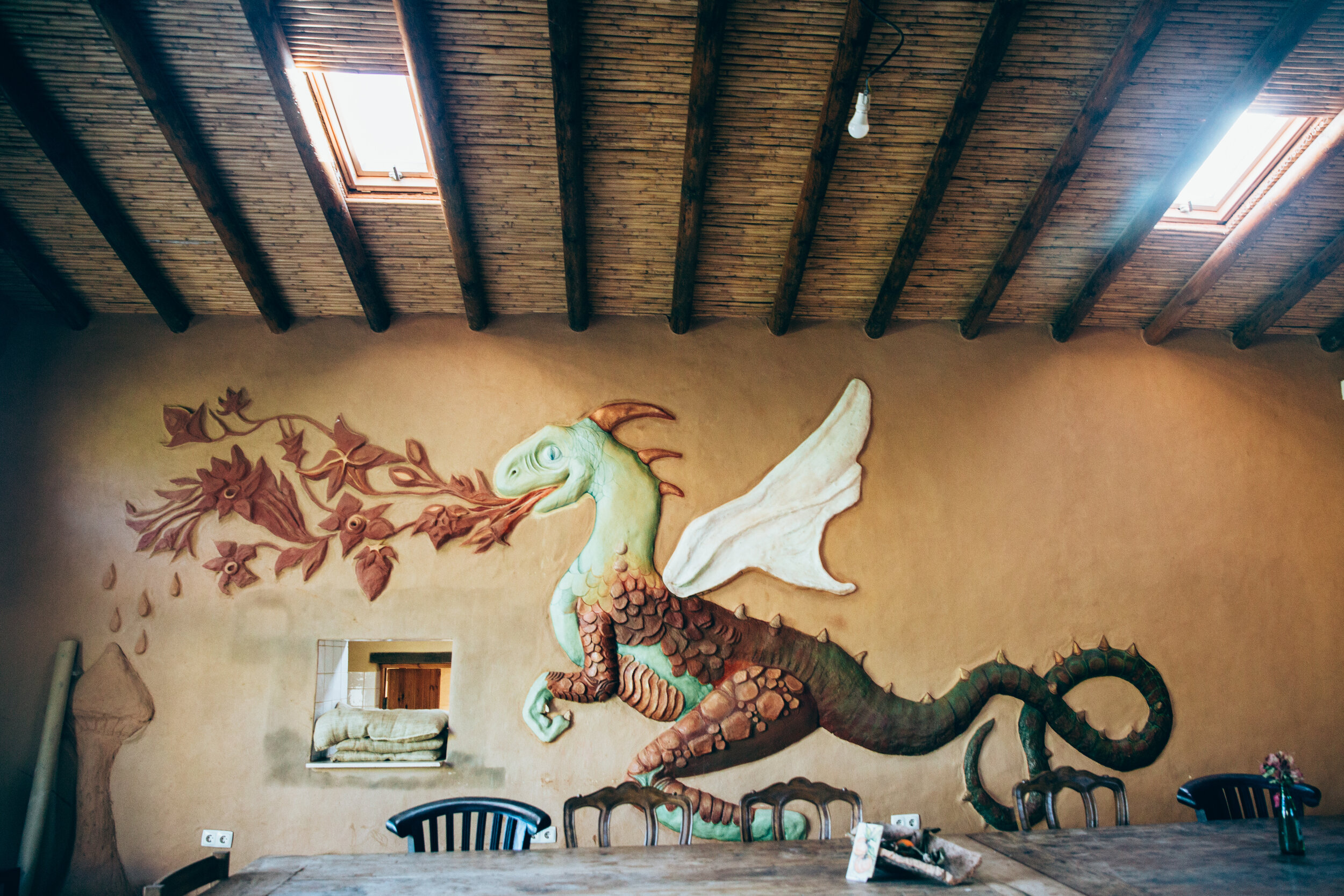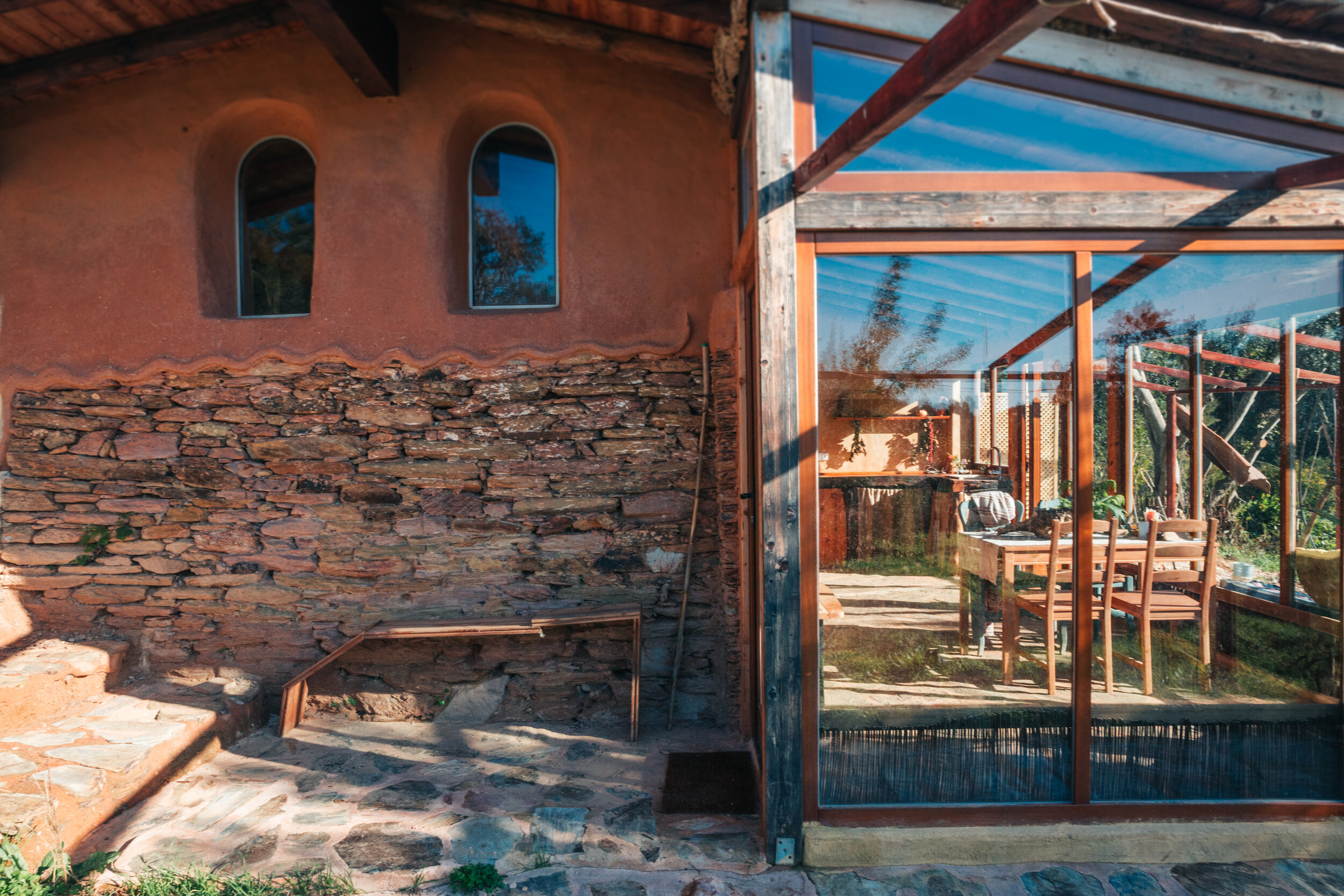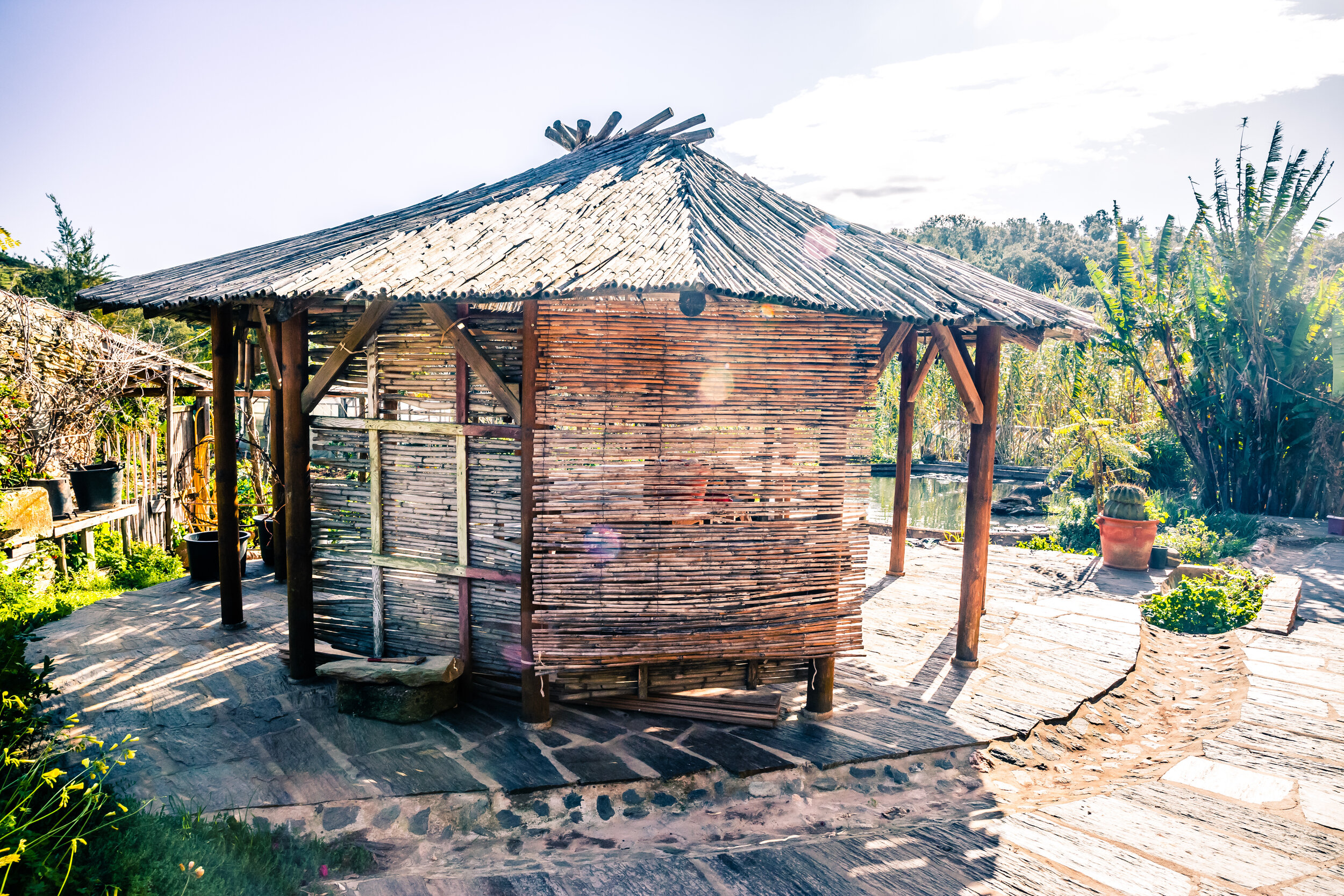
Building Sustainability
At A Quinta, we are fortunate to have diverse building materials: clay, eucalyptus wood, locally grown bamboo grasses (canas), and slate stones—all perfect for creating something beautiful! Traditionally, houses in the Alentejo region use a rammed earth construction method called taipa.
The foundation consists of slate stones up to half a meter high, followed by 30-centimeter-thick walls made of clay, sand, and stones, which last indefinitely if protected from rain. Despite collapsed roofs in many old ruins, the walls remain sturdy.
BEFORE
AFTER
Our rammed earth walls are covered with a cob mix, ideal for plastering and art, adjusted by region and testing for the best mix. Ours uses 50% cob and 50% sand, accessible for all ages. A Quinta showcases eco-constructed buildings, including our main building and earthship-style cottages: Casa do Louro, Casa da Colina, Casa do Pomar, and the Yurt, all crafted with natural materials.
The Treehouse is also a source of pride, built without harming the tree—no nails or screws used, allowing the tree to grow freely. Other eco-building examples include a reciprocal eucalyptus roof, various indoor and outdoor wall arts, rocket stoves, a pizza oven, and our ceremonial space, the Shala.
These practices not only ensure sustainable food production but also contribute to a healthier environment for future generations.
Regenerative agriculture is not just a philosophy but a practical solution that aligns with our commitment to sustainability. It's about cultivating a harmonious relationship between agriculture and nature, where every action we take contributes to the long-term health of our farm and the surrounding environment.
“Eco-construction is not just about building with natural materials; it’s about creating spaces that nurture our connection to the Earth and promote sustainable living.”







